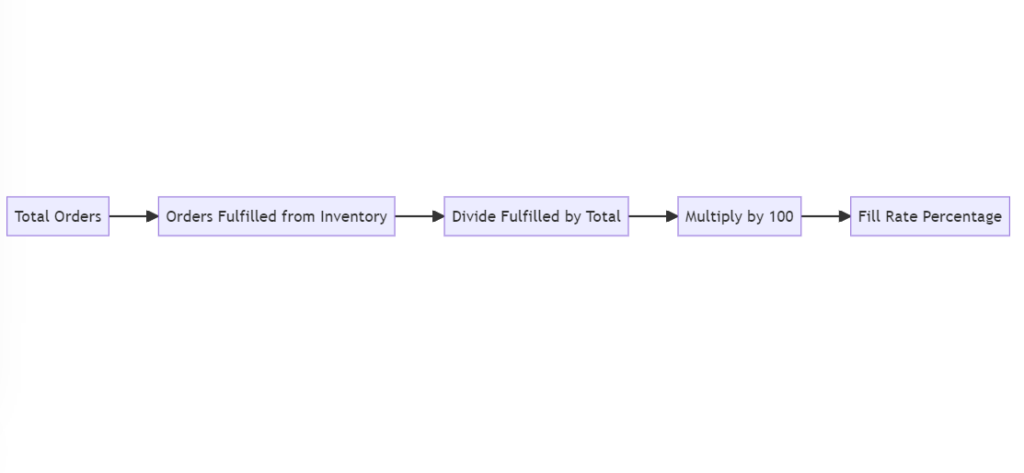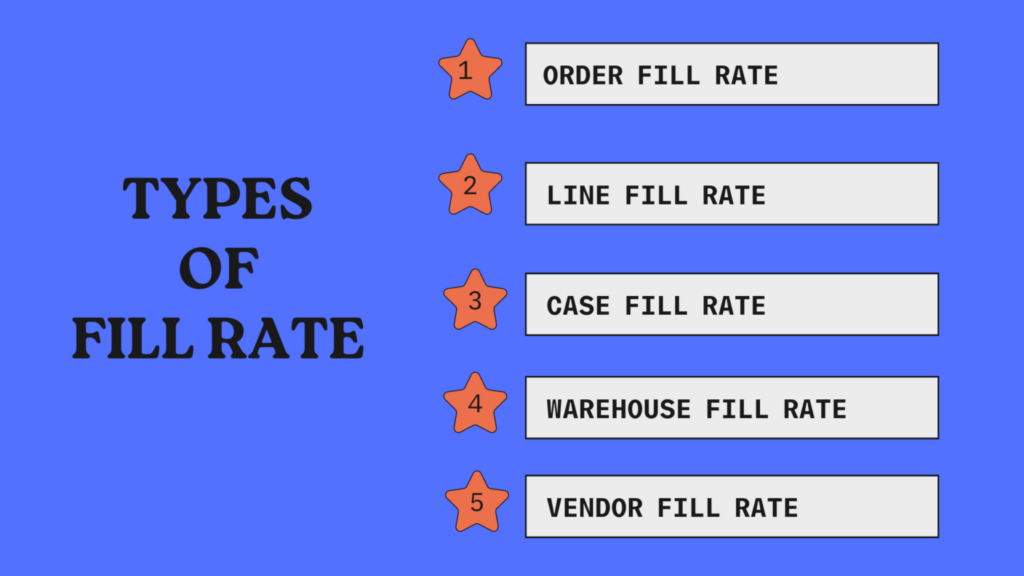
Having a firm grasp on your inventory management strategy is the key to a successful e-commerce business. An often overlooked yet crucial metric in this process is the fill rate. Understanding and optimizing your shipment completion rate can lead to higher customer satisfaction, improved inventory efficiency, and ultimately, business growth.
Defining Fill Rate: The Heart of Inventory Management
Fill rate is a critical metric that measures the ability of your company to fulfill customer orders as requested. It reflects the percentage of customer demand that is met from in-stock inventory, thereby illustrating the effectiveness of your inventory management.

The Importance of Fill Rate
High fill rates demonstrate a seamless supply chain process. They signify the alignment between your inventory levels and customer demands, highlighting efficient forecasting and effective inventory management.
- Customer Satisfaction: Timely order fulfillment leads to increased customer satisfaction and fosters customer loyalty. A high fill rate ensures that your customers receive their products on time, improving their overall experience with your brand.
- Inventory Efficiency: shipment completion rate directly impacts your inventory management. High fill rates can be an indicator of optimal inventory levels, reducing holding costs and increasing turnover.
- Competitive Advantage: Businesses with high fill rates often gain an edge over their competition. They can guarantee prompt delivery to their customers, setting the stage for enhanced customer relationships and business growth.
What is the fill rate formula?
The fill rate formula is calculated by dividing the number of orders or units successfully fulfilled from in-stock inventory by the total number of orders or units requested, then multiplying the result by 100 to get a percentage.
Here it is in a straightforward mathematical representation:
Fill Rate (%) = (Number of Orders Fulfilled / Total Number of Orders) x 100
Let’s break this down:
- Number of Orders Fulfilled: This is the count of orders that your business has successfully delivered using the stock you have on hand. It’s crucial that these orders are completed without any backordering or delay.
- Total Number of Orders: This is the total count of orders received by your business in a specified period. This timeframe could be a day, a week, a month, or any other period relevant to your operations.
The result is then multiplied by 100 to transform the ratio into a percentage, making it easier to interpret and compare. A higher shipment completion rate percentage indicates a higher rate of order fulfillment from in-stock inventory, and typically signifies effective inventory management and high customer satisfaction levels.
Calculating Your Fill Rate: A Step-by-Step Guide
To accurately calculate your shipment completion rate, follow these steps:
- Count the total number of orders received in a given period.
- Count the number of orders fulfilled from in-stock inventory during the same period.
- Divide the number of fulfilled orders by the total number of orders.
- Multiply the result by 100 to get the order fulfillment rate percentage.
Here is a basic representation of the calculation:

Optimizing Your Fill Rate: Best Practices
Optimizing your order fulfillment rate involves careful inventory management, demand forecasting, and efficient order fulfillment. Here are some strategies to consider:
Improve Demand Forecasting
Accurate demand forecasting can help you maintain optimal inventory levels and enhance your shipment completion rate. Consider factors such as seasonal trends, market changes, and promotional events when predicting customer demand.
Maintain Safety Stock
Safety stock serves as a buffer for unexpected demand surges or supply chain disruptions. Maintaining a safety stock can help increase your order fulfillment rate by ensuring you always have products available for order fulfillment.
Foster Supplier Relationships
Strong relationships with suppliers can help ensure a steady flow of inventory. This is crucial for maintaining high fill rates and meeting customer expectations.
Use Inventory Management Software
Utilizing robust inventory management software can provide real-time inventory visibility and automated restocking alerts. This can aid in maintaining an optimal inventory level, thereby boosting your shipment completion rate.
Monitoring and Adjusting Your Fill Rate
Remember, maintaining a high order fulfillment rate is an ongoing process. Monitor your fill rate regularly and make necessary adjustments based on your business growth, market conditions, and customer feedback. With consistent effort, a high shipment completion rate can be one of your most powerful tools for improving customer satisfaction, maximizing sales, and driving business growth.
Diving Deeper: Exploring Different Types of Fill Rate

Fill rate is a broad term that encompasses a number of variants. Each type of order fulfillment rate offers its unique perspective on inventory management and order fulfillment. Understanding these variations can aid you in better evaluating your supply chain efficiency and customer service quality.
Line Fill Rate
The line order fulfillment rate refers to the percentage of order lines, or unique products, that are successfully fulfilled from stock on hand. This metric provides a more granular view into order fulfillment, as it considers each individual product within an order.
Here’s an example: if an order includes five different products and you have four available in stock, your line order fulfillment rate is 80%.
Order Fill Rate
Order fill rate measures the percentage of orders completely fulfilled from available inventory. Unlike line shipment completion rate, this metric looks at the order as a whole, rather than individual products.
For instance, if a customer places 10 orders, and you’re able to fully fulfill 9 out of those 10, your order shipment completion rate would be 90%.
Case Fill Rate
Distribution and wholesale companies are primarily concerned with case fill rates, which refer to the percentage of products an organization ships out or all cases ordered.
Warehouse Fill Rate
The warehouse shipment completion rate is the same as the order shipment completion rate. Supply chain supervisors estimate the percentage of orders they fulfill and ship from their warehouse to fulfill customer orders.
Vendor Fill Rate
Companies that buy from vendors often estimate vendor fill rates in wholesale and allotments. This calculates the percentage of vendors who have finished order shipments out of the total number of vendors a business acquires for its orders.
Conclusion
In a nutshell, a high shipment completion rate is a powerful indicator of the effectiveness of your inventory management and the satisfaction of your customers. By understanding and optimizing your shipment completion rate, you can enhance your e-commerce business’s performance and stay ahead of the competition.